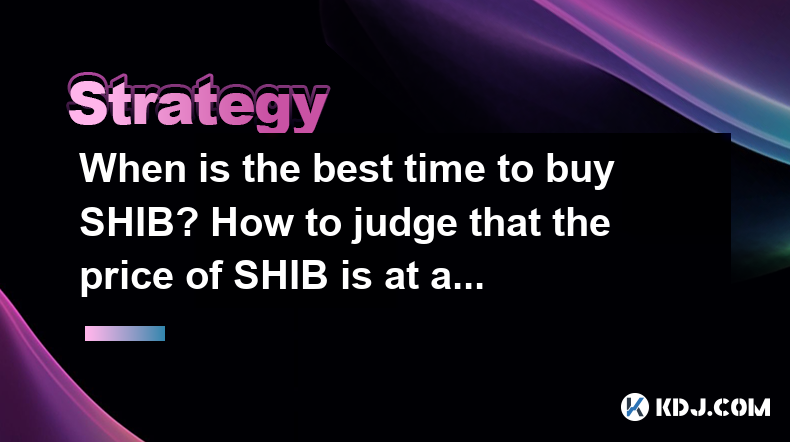-
 Bitcoin
Bitcoin $94,681.8142
0.38% -
 Ethereum
Ethereum $1,788.1459
-0.68% -
 Tether USDt
Tether USDt $1.0002
-0.01% -
 XRP
XRP $2.2955
0.98% -
 BNB
BNB $604.4467
0.06% -
 Solana
Solana $147.5309
-1.12% -
 USDC
USDC $1.0003
0.04% -
 Dogecoin
Dogecoin $0.1786
-1.74% -
 Cardano
Cardano $0.7036
-1.05% -
 TRON
TRON $0.2477
0.30% -
 Sui
Sui $3.6023
-0.53% -
 Chainlink
Chainlink $14.9121
1.41% -
 Avalanche
Avalanche $21.9641
0.01% -
 Stellar
Stellar $0.2825
-1.47% -
 UNUS SED LEO
UNUS SED LEO $8.9840
-1.12% -
 Toncoin
Toncoin $3.2464
-2.09% -
 Hedera
Hedera $0.1919
1.03% -
 Shiba Inu
Shiba Inu $0.0...01371
0.91% -
 Bitcoin Cash
Bitcoin Cash $351.0692
0.69% -
 Polkadot
Polkadot $4.2468
3.03% -
 Litecoin
Litecoin $85.3522
-1.39% -
 Hyperliquid
Hyperliquid $17.7778
1.06% -
 Dai
Dai $1.0001
0.01% -
 Bitget Token
Bitget Token $4.3953
0.31% -
 Ethena USDe
Ethena USDe $0.9994
-0.02% -
 Monero
Monero $253.1948
10.04% -
 Pi
Pi $0.6112
-3.36% -
 Pepe
Pepe $0.0...08971
0.93% -
 Aptos
Aptos $5.5768
2.81% -
 Uniswap
Uniswap $5.4310
-2.64%
How to use Bitcoincoin for hedging transactions? Techniques to reduce risks?
Dogecoin's volatility makes it a useful tool for hedging against other cryptocurrencies; techniques include short selling, futures, and portfolio diversification.
Apr 28, 2025 at 11:07 pm

Using Dogecoin for hedging transactions can be an intriguing strategy for those involved in the cryptocurrency market, particularly given its volatile nature. Hedging, in the context of cryptocurrencies, involves taking positions that can offset potential losses in other investments. Dogecoin, known for its meme-inspired origins and significant price fluctuations, can be used as a tool to hedge against other cryptocurrencies or financial instruments. This article will delve into the techniques and strategies to use Dogecoin effectively for hedging and reducing risks.
Understanding Hedging with Dogecoin
Hedging is a risk management strategy used to offset potential losses in one investment by taking an opposing position in another. When using Dogecoin for hedging, the goal is to protect against adverse price movements in other cryptocurrencies or assets. Given Dogecoin's high volatility, it can be an effective tool for this purpose.
To start hedging with Dogecoin, you need to understand the correlation between Dogecoin and the asset you are trying to hedge. If Dogecoin has a negative correlation with the asset, it can serve as an effective hedge. For instance, if you hold Bitcoin and notice that Dogecoin tends to move in the opposite direction, you can use Dogecoin to hedge your Bitcoin position.
Techniques for Hedging with Dogecoin
There are several techniques you can employ to use Dogecoin for hedging. Here are some of the most common methods:
Short Selling Dogecoin: If you anticipate a decline in the value of another cryptocurrency, you can short sell Dogecoin. This involves borrowing Dogecoin and selling it at the current market price, with the intention of buying it back at a lower price to return to the lender. If the value of the other cryptocurrency falls as expected, the gains from short selling Dogecoin can offset the losses.
Using Dogecoin Futures: Futures contracts allow you to buy or sell Dogecoin at a predetermined price on a future date. By entering into a futures contract, you can lock in a price for Dogecoin, which can help mitigate the risk of price fluctuations in other assets. If the price of the other asset falls, the gains from the Dogecoin futures can help offset the losses.
Diversifying with Dogecoin: Another technique is to diversify your portfolio by including Dogecoin. By holding a mix of cryptocurrencies, including Dogecoin, you can spread the risk across different assets. If one cryptocurrency performs poorly, the gains from Dogecoin can help cushion the impact.
Steps to Implement Dogecoin Hedging
To effectively use Dogecoin for hedging, follow these steps:
Analyze Market Correlations: Begin by analyzing the correlation between Dogecoin and the asset you want to hedge. Use historical data and market analysis tools to identify patterns and trends.
Choose the Right Hedging Instrument: Decide whether to use short selling, futures contracts, or diversification. Each method has its own set of risks and benefits, so choose the one that aligns with your risk tolerance and investment goals.
Execute the Hedge: Once you have chosen your hedging instrument, execute the hedge. For short selling, you will need to borrow Dogecoin and sell it. For futures, you will need to enter into a contract. For diversification, you will need to allocate a portion of your portfolio to Dogecoin.
Monitor and Adjust: Hedging is not a set-and-forget strategy. Continuously monitor the market and adjust your hedge as needed. If the correlation between Dogecoin and the asset changes, you may need to modify your hedging strategy.
Risk Management with Dogecoin
While Dogecoin can be used for hedging, it is important to manage the risks associated with this strategy. Here are some tips for effective risk management:
Set Stop-Loss Orders: Use stop-loss orders to limit potential losses. A stop-loss order will automatically sell your Dogecoin if the price falls to a certain level, helping to prevent significant losses.
Use Leverage Cautiously: If you are using leverage to short sell Dogecoin or enter into futures contracts, be cautious. Leverage can amplify both gains and losses, so use it sparingly.
Stay Informed: Keep up to date with market news and developments that could affect Dogecoin and the asset you are hedging. Being informed can help you make better decisions and adjust your strategy as needed.
Practical Example of Dogecoin Hedging
To illustrate how Dogecoin can be used for hedging, consider the following example:
Suppose you hold a significant amount of Ethereum and are concerned about a potential price drop. You notice that Dogecoin has a negative correlation with Ethereum, meaning when Ethereum's price falls, Dogecoin's price tends to rise. To hedge your Ethereum position, you decide to short sell Dogecoin.
- Borrow Dogecoin: You borrow 1000 Dogecoin from a broker.
- Sell Dogecoin: You sell the borrowed Dogecoin at the current market price of $0.50 per Dogecoin, receiving $500.
- Monitor Ethereum: You keep an eye on Ethereum's price. If it falls as expected, you plan to buy back the Dogecoin at a lower price.
- Buy Back Dogecoin: Suppose Ethereum's price falls by 10%, and Dogecoin's price rises to $0.55. You buy back the 1000 Dogecoin at $0.55 each, spending $550.
- Return Dogecoin: You return the 1000 Dogecoin to the broker, incurring a loss of $50 on the Dogecoin transaction.
- Offset Losses: However, the 10% drop in Ethereum's price results in a $500 loss on your Ethereum holdings. The $50 loss on the Dogecoin hedge offsets some of the Ethereum loss, reducing your overall loss to $450.
In this example, the Dogecoin hedge helped mitigate the impact of the Ethereum price drop, demonstrating how Dogecoin can be used effectively for hedging.
Frequently Asked Questions
Q: Can Dogecoin be used to hedge against traditional financial instruments like stocks or commodities?
A: While Dogecoin can be used to hedge against other cryptocurrencies, its effectiveness in hedging against traditional financial instruments is limited. The correlation between Dogecoin and stocks or commodities is typically low, making it less suitable for this purpose. However, in some cases, if a specific stock or commodity has a high correlation with the broader cryptocurrency market, Dogecoin might be used as a hedge.
Q: What are the tax implications of using Dogecoin for hedging?
A: The tax implications of using Dogecoin for hedging can be complex and depend on your jurisdiction. In general, profits from short selling or futures contracts may be subject to capital gains tax. It is advisable to consult with a tax professional to understand the specific tax implications in your region.
Q: How can I find reliable data on the correlation between Dogecoin and other assets?
A: To find reliable data on the correlation between Dogecoin and other assets, you can use cryptocurrency data platforms like CoinMetrics, CryptoCompare, or CoinGecko. These platforms provide historical price data and correlation analysis tools that can help you make informed hedging decisions.
Q: Is it possible to automate Dogecoin hedging strategies?
A: Yes, it is possible to automate Dogecoin hedging strategies using trading bots and algorithmic trading platforms. These tools can execute trades based on predefined rules and market conditions, allowing for more efficient and timely hedging. However, it is important to thoroughly test and monitor automated strategies to ensure they perform as expected.
Disclaimer:info@kdj.com
The information provided is not trading advice. kdj.com does not assume any responsibility for any investments made based on the information provided in this article. Cryptocurrencies are highly volatile and it is highly recommended that you invest with caution after thorough research!
If you believe that the content used on this website infringes your copyright, please contact us immediately (info@kdj.com) and we will delete it promptly.
- Bitcoin (BTC) Nears $90,000 as Market Cap Surges to $2.98 Trillion
- 2025-04-29 04:40:12
- The crypto markets heat up as meme coins capture widespread attention. Fartcoin (FARTCOIN) leads the charge
- 2025-04-29 04:40:12
- Unstaked Emerges as the Fastest-Growing Crypto, Offering a Rare Sub-Cent Entry Price
- 2025-04-29 04:35:12
- After Months of Uncertainty, April 2025 is Giving Crypto Investors a Reason to Smile Again
- 2025-04-29 04:35:12
- Kyrgyz Republic Marks 80th Anniversary of Victory over Fascism with a Silver Collector's Coin
- 2025-04-29 04:30:12
- Top Cryptocurrencies to Buy Today (April 28): Qubetics (TICS), Stacks (STX), Quant (QNT), Aptos (APT), EOS (EOS), Astra (ASTRA), Theta (THETA)
- 2025-04-29 04:30:12
Related knowledge

What are the short-selling strategies for SHIB? How to hedge the risk of decline?
Apr 29,2025 at 03:49am
In the world of cryptocurrencies, short-selling strategies and hedging against potential declines are crucial for managing risk, especially with volatile assets like SHIB (Shiba Inu). This article will delve into various short-selling strategies for SHIB and explore ways to hedge the risk of decline. Understanding Short-Selling in the Context of SHIBSho...

How to find the support and resistance levels of SHIB? Is technical analysis useful?
Apr 29,2025 at 12:28am
Introduction to Support and Resistance Levels in SHIBWhen trading or investing in cryptocurrencies like Shiba Inu (SHIB), understanding the concept of support and resistance levels is crucial. These levels help traders predict potential price movements and make informed decisions. Support levels are price points where a downtrend can be expected to paus...

When is the best time to buy SHIB? How to judge that the price of SHIB is at a low point?
Apr 28,2025 at 08:57pm
When is the best time to buy SHIB? How to judge that the price of SHIB is at a low point? Determining the best time to buy Shiba Inu (SHIB) and identifying when its price is at a low point involves understanding market trends, technical analysis, and the broader crypto ecosystem. This article will delve into these aspects to help you make informed decis...

How to arbitrage through AVAX contract trading? What risks should I pay attention to?
Apr 28,2025 at 07:35pm
Introduction to AVAX Contract TradingArbitrage through AVAX contract trading involves taking advantage of price discrepancies of Avalanche (AVAX) across different platforms or contracts. AVAX, the native token of the Avalanche blockchain, is a popular cryptocurrency that can be traded on various decentralized exchanges (DEXs) and centralized exchanges (...

What should I do when the price of AVAX fluctuates violently? Chase the rise or stop loss?
Apr 29,2025 at 01:35am
When the price of AVAX fluctuates violently, it can be challenging to decide whether to chase the rise or implement a stop loss. Understanding the dynamics of the market and your own investment strategy is crucial in making an informed decision. Let's delve into the strategies and considerations for handling such situations. Understanding AVAX and Its M...

How to use moving averages to judge LINK trends? Practical examples of moving average tactics
Apr 28,2025 at 09:07pm
Using moving averages to judge trends in Chainlink (LINK) can be a powerful tool for traders and investors looking to make informed decisions. Moving averages smooth out price data to form a single flowing line, making it easier to identify the direction of the trend. This article will explore how to use different types of moving averages to analyze LIN...

What are the short-selling strategies for SHIB? How to hedge the risk of decline?
Apr 29,2025 at 03:49am
In the world of cryptocurrencies, short-selling strategies and hedging against potential declines are crucial for managing risk, especially with volatile assets like SHIB (Shiba Inu). This article will delve into various short-selling strategies for SHIB and explore ways to hedge the risk of decline. Understanding Short-Selling in the Context of SHIBSho...

How to find the support and resistance levels of SHIB? Is technical analysis useful?
Apr 29,2025 at 12:28am
Introduction to Support and Resistance Levels in SHIBWhen trading or investing in cryptocurrencies like Shiba Inu (SHIB), understanding the concept of support and resistance levels is crucial. These levels help traders predict potential price movements and make informed decisions. Support levels are price points where a downtrend can be expected to paus...

When is the best time to buy SHIB? How to judge that the price of SHIB is at a low point?
Apr 28,2025 at 08:57pm
When is the best time to buy SHIB? How to judge that the price of SHIB is at a low point? Determining the best time to buy Shiba Inu (SHIB) and identifying when its price is at a low point involves understanding market trends, technical analysis, and the broader crypto ecosystem. This article will delve into these aspects to help you make informed decis...

How to arbitrage through AVAX contract trading? What risks should I pay attention to?
Apr 28,2025 at 07:35pm
Introduction to AVAX Contract TradingArbitrage through AVAX contract trading involves taking advantage of price discrepancies of Avalanche (AVAX) across different platforms or contracts. AVAX, the native token of the Avalanche blockchain, is a popular cryptocurrency that can be traded on various decentralized exchanges (DEXs) and centralized exchanges (...

What should I do when the price of AVAX fluctuates violently? Chase the rise or stop loss?
Apr 29,2025 at 01:35am
When the price of AVAX fluctuates violently, it can be challenging to decide whether to chase the rise or implement a stop loss. Understanding the dynamics of the market and your own investment strategy is crucial in making an informed decision. Let's delve into the strategies and considerations for handling such situations. Understanding AVAX and Its M...

How to use moving averages to judge LINK trends? Practical examples of moving average tactics
Apr 28,2025 at 09:07pm
Using moving averages to judge trends in Chainlink (LINK) can be a powerful tool for traders and investors looking to make informed decisions. Moving averages smooth out price data to form a single flowing line, making it easier to identify the direction of the trend. This article will explore how to use different types of moving averages to analyze LIN...
See all articles






















































































